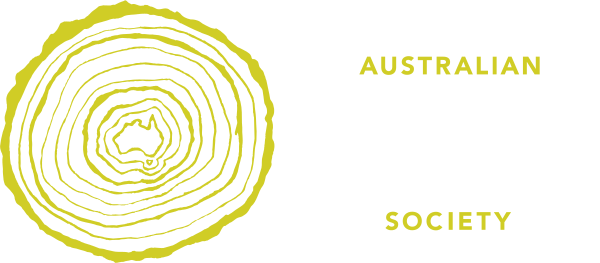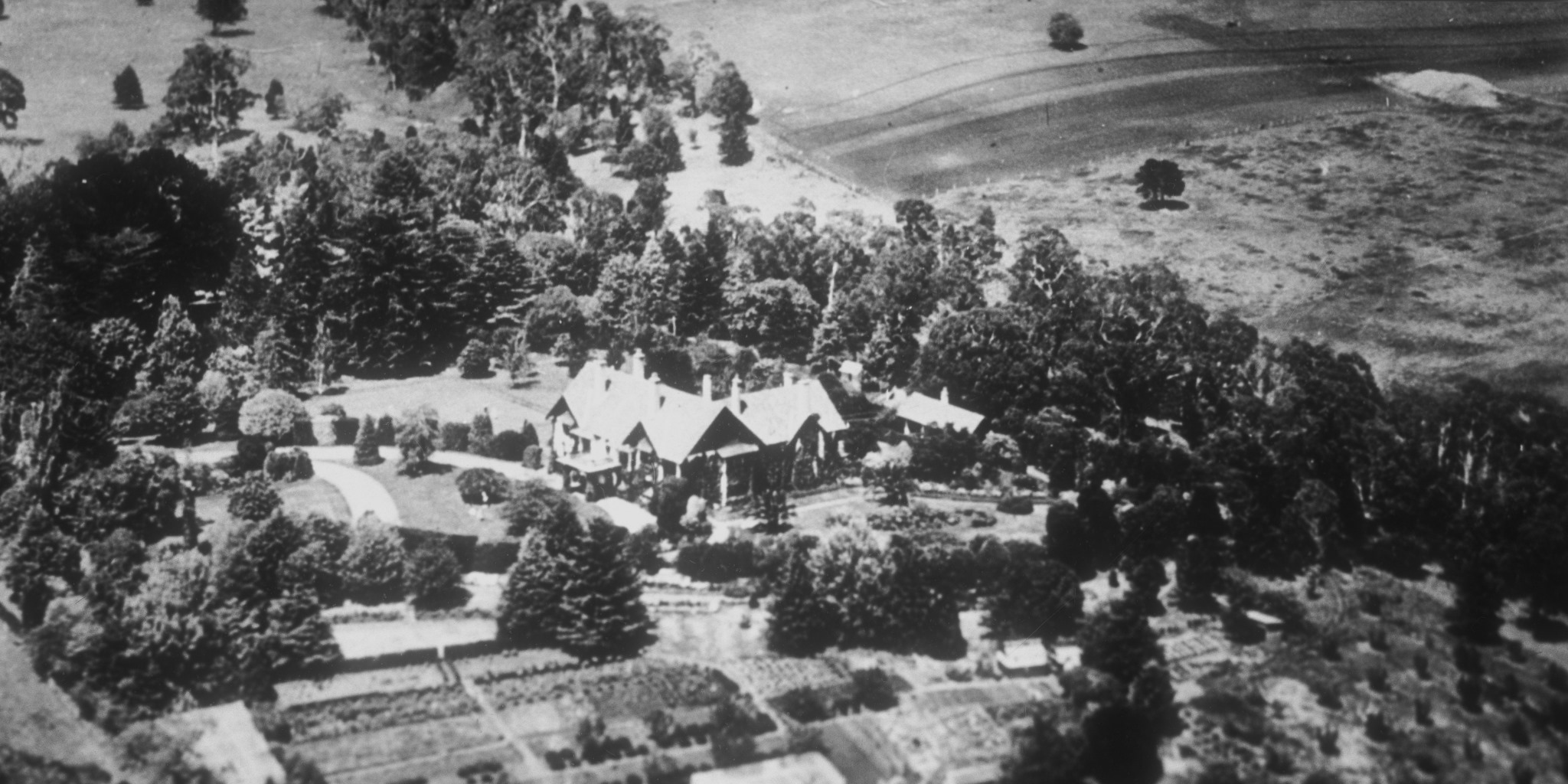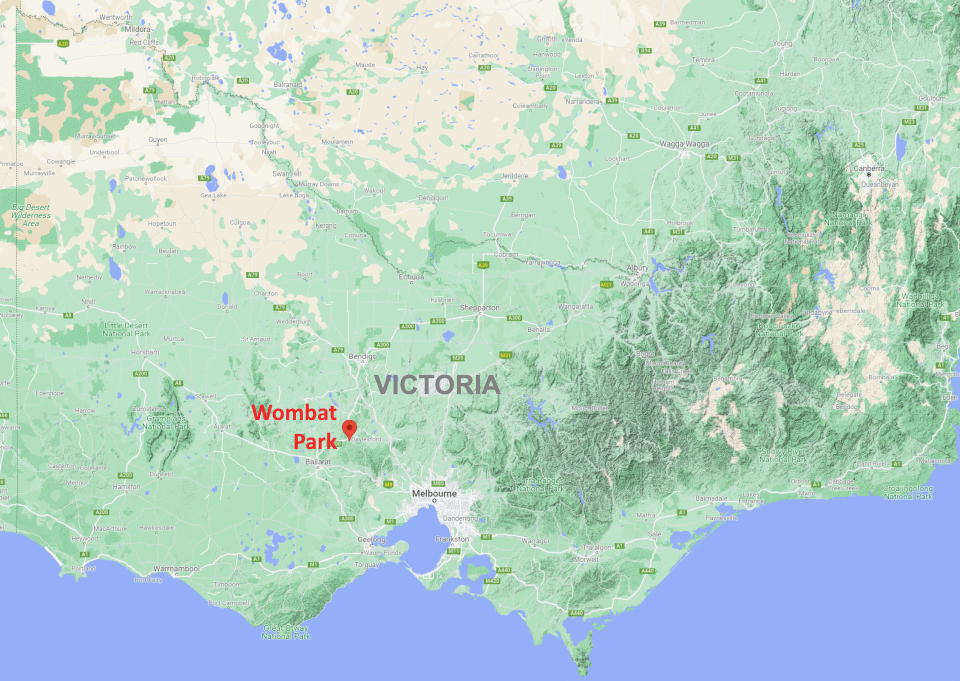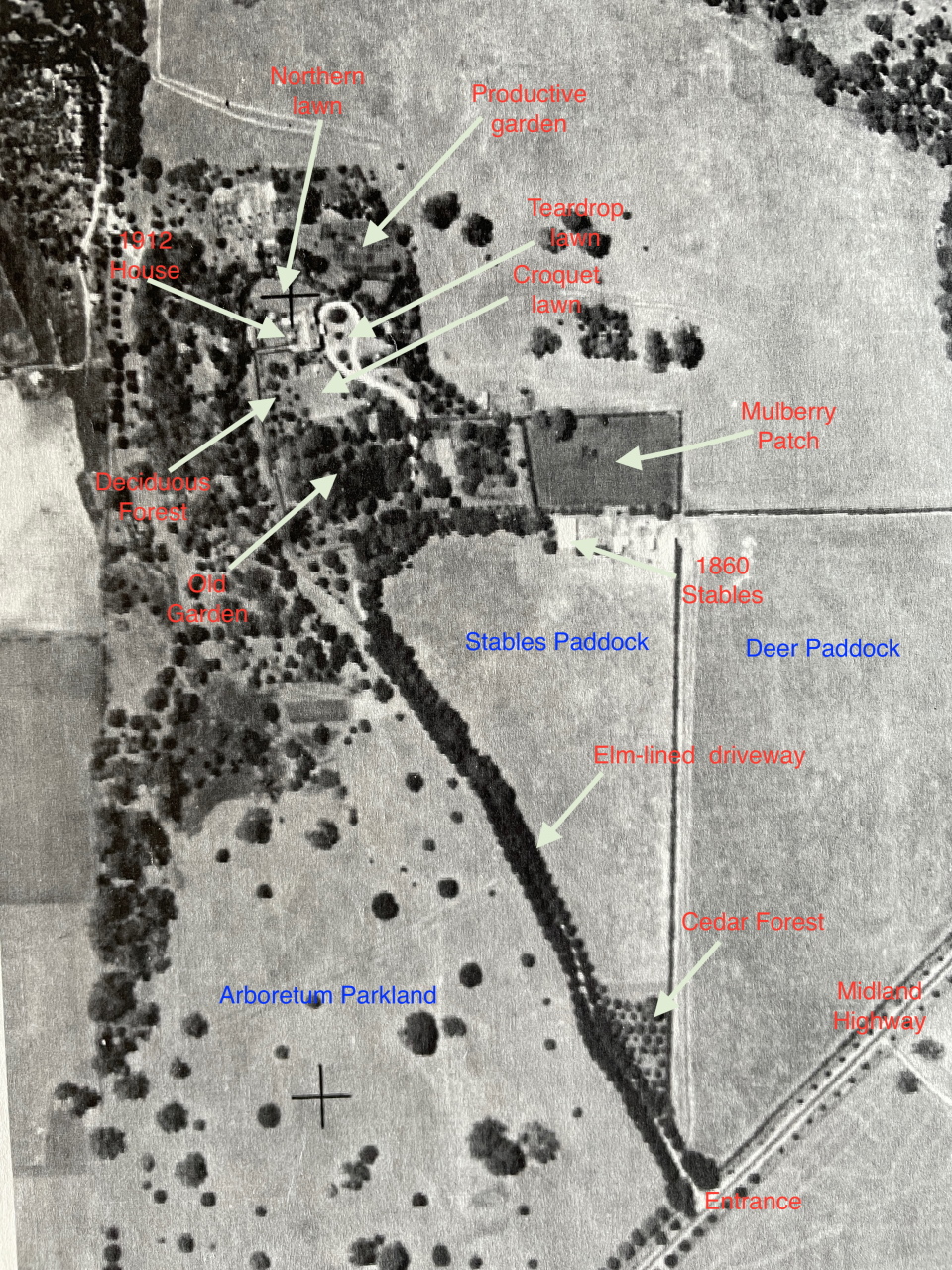Wombat Park is a 181 hectare property located just outside Daylesford, Victoria, a popular rural destination for those escaping the city for the weekend or looking for a relaxed lifestyle in a culturally rich locale.
The gardens of Wombat Park are noted for the impressive selection of mature trees in the ‘old garden’ established by William E Stanbridge from the early 1850s and the ‘new garden’, created by his daughter Florence to complement the distinctive Edwardian homestead designed by Rodney Alsop in 1910.
Images and information are drawn from several sources:
- Brooke Family (last descendants of Stanbridge to live at Wombat Park)
- National Trust (Victoria)
- Miffy Gilbert’s final thesis Conservation Analysis & Management Plan Wombat Park Daylesford: Bachelor of Applied Science (Horticulture) 1994, University of Melbourne, Burnley Campus
- Simon Griffiths images captured over several years and seasons
- State Library of Victoria photograph collection (J T Collins)
This photographic study consists of 7 image sets:
- Approaching the house - highlighting the spectacular elm avenue;
- House and gardens - showing a progression over 100 years;
- Entry to Mulberry Patch - where some very old hard landscaping survives;
- Old garden - where specimens Stanbridge established very early on are at full development;
- Deciduous Forest - where brilliant autumnal colours are caught;
- Stables - the oldest surviving buildings on the property;
- Aerial views - showing the extensive plantings on the property from above
The Wombat Park site map shows some of the key features presented in the images. Click here or on the map to start the full slide show.
Pictorial curated by Trevor Pitkin.
Important notes about viewing the images:
- The image sets are displayed as a slide show.
- To see further information about an image, hover your mouse pointer between the top and middle of the image (or for touch screens swipe down).
- To enjoy the images free of clutter, move the mouse pointer outside the viewing area and the controls will vanish.
- You can stop and start the slide show at any time by clicking the pause
 and resume/play
and resume/play  button at the top right.
button at the top right. - To view in full-screen mode, click the expand
 button near the top right. To restore normal viewing size click the contract
button near the top right. To restore normal viewing size click the contract  button.
button. - The original (uncropped) image can by viewed by clicking on the slide show image (or for touch screens tap once). Click the circled X near the top right to resume slide show mode.
- To navigate through the images simply click ❮ (for previous) or ❯ (for next), or click the image thumbnail of interest at the bottom.
- To return to this page, click the
 button near the top right.
button near the top right.



